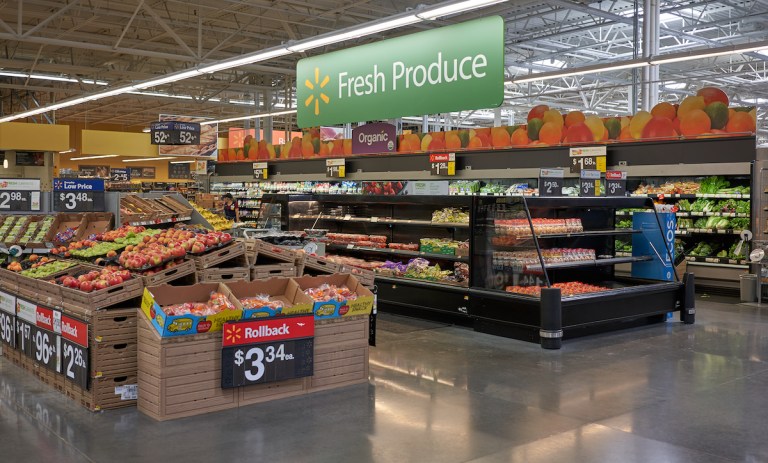CPG Subscriptions Eat Into Walmart’s Grocery Share

Increasingly, when consumers go to the grocery store, it is just to buy food, such that leading grocery retailers are losing share of center-aisle products to eCommerce players such as subscription merchants.
“We’ve seen an increasing trend, particularly with the subscription economy, for the center-aisle stuff — think of consumer-packaged goods, all the stuff that’s not really perishable — a lot of that has been moved to subscriptions,” PYMNTS Senior Vice President and Head of Analytics Scott Murray noted. “…Paper towels, toilet paper and even cans of soup and things like that, but when it comes to perishables, I think people generally still go [to stores].”
He added that Amazon’s Subscribe & Save program is the leading player in this space.
Subscribers spend less time in stores, per data from the PYMNTS Intelligence report “The Replenish Economy: A Household Supply Deep Dive,” which drew from a survey of more than 2,000 U.S. consumers. The study found that 42% of retail subscribers shop in-store less often because of their subscriptions, and that share rose to 48% for Subscribe & Save participants.
For leaders in traditional grocery, such as Walmart, this shift poses a threat, unless these players can offer their own comparable services. Murray discussed the retail giant’s efforts to hold its own against growing competition from eCommerce players, noting that rather than leaning into its own discount-refill subscription offerings, it is emphasizing other convenience-oriented channels.
“I think Walmart tries to take advantage of the in-store-ness of themselves with, for instance, the same-day delivery,” Murray said. “That was part of their Walmart+ program — to get that grocery delivery [occasion]. … So, it’s clearly an important thing for them.”
When it comes to the food part of grocery, Walmart is holding its own. The PYMNTS Intelligence report “Whole Paycheck Report: New Consumer Spend Data Finds Amazon Way Ahead of Walmart” estimated Amazon and Walmart’s market shares in various categories based on years of earnings reports in conjunction with national data from the U.S. Census Bureau and Bureau of Economic Analysis. The results revealed that Walmart’s share of food and beverage consumer spending has held relatively flat in recent years, hovering around 18% to 19%.
Yet in non-food categories that consumers may have once turned to their grocery retailers for, Walmart is losing share to Amazon. The report noted that the latter has surpassed the former in health and personal care retail sales.
The shift toward discount subscriptions comes as consumers continue to look for ways to control their spending amid ongoing financial challenges, even as grocery inflation has leveled off.
“Net-net prices are still up 25% relative to last year, and we know most people didn’t get paycheck increases to match, so people are clearly worse off,” Murray said.
PYMNTS Intelligence data showed that 86% of consumers have made changes to their grocery shopping habits in response to rising prices. Fifty-eight percent have cut down on nonessential spending, 44% have switched to cheaper merchants, and 34% have reduced the quality of products they buy.
For all PYMNTS retail coverage, subscribe to the daily Retail Newsletter.